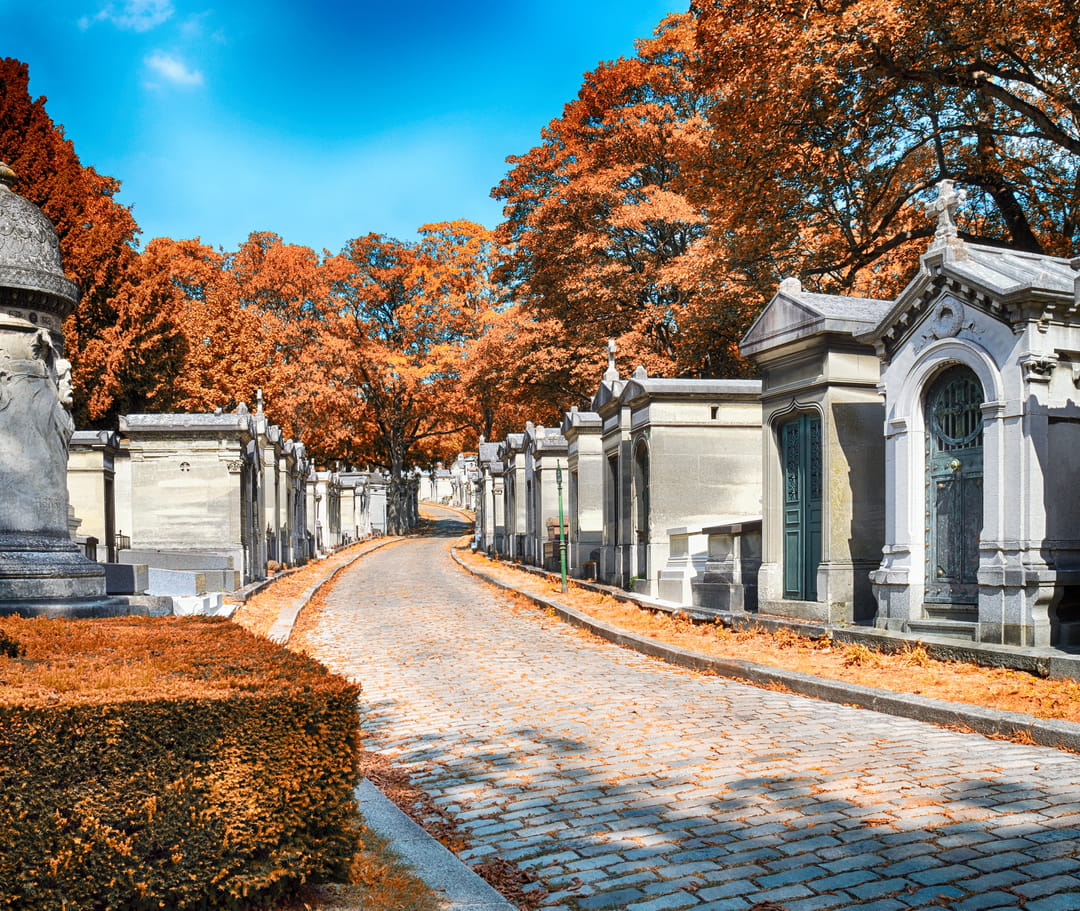TOUSSAINT. Tuesday November 1st is celebrated the feast of the dead in France. This holiday leaves the possibility of enjoying a long weekend of 4 days by bridging the gap. Here are the destinations to go to.
[Mis à jour le 21 octobre 2022 à 16h31] Originally a religious holiday, All Saints’ Day, celebrated on November 1, aims to honor the deceased in the Catholic Church. Entry into the republican calendar, it now corresponds to a vacation period for all schoolchildren, middle schoolers, high school students and students in France.
But what to do during these four days? Castles, seaside, wine-growing villages, cultural towns or Provençal hinterlands… for the All Saints’ bridge, the French travel mainly within France. And it’s not because the holidays seem far away that the grayness is necessarily there!
We have selected for you places in France where to go with family or friends, just to get some fresh air in the very particular landscapes of autumn, with the orange-red hue of the foliage. Discover our selection of the best destinations:
Whether you are an art lover, an architecture enthusiast, a nature lover or in search of tranquillity, France offers many possibilities for getaways, and even on All Saints Day. Here are our favorite destinations in France for a getaway embellished by the fall season. If the temperatures drop, the sun is often present, especially in the South. No need to go very far for a little escape:
If in North America, the Indian summer is almost systematic, this period of favorable weather is much more uncertain in our regions (predictions to be checked this year!). In the Middle Ages, we often spoke ofSt. Martin’s summer (celebrated on November 11), which gave rise to celebrations in most towns and villages.
Today the Toussaint is one of the 11 recognized public holidays in France and appears in the article L3133-11 of the Labor Code. Before the French Revolution, there were nearly 50 religious holidays in France, including All Saints Day. In order to reduce the influence of Catholicism and for the sake of economic efficiency, they will be abolished with the advent of the revolutionary calendar, which will come into force on October 6, 1793 (or 15 Vendémiaire of Year II of the Republic). In the villages, people lend themselves reluctantly to this new state of affairs and they continue to be unemployed on Saint John’s or All Saints’ Day. In 1802, Napoleon restored four religious holidays, one for each season: Christmas in winter, Ascension in spring, Assumption in summer and All Saints in autumn. Despite its anticlericalism, the Third Republic will not go back on this religious heritage. The crisis could, on the other hand, call into question the existence of certain religious holidays: in 2012, Portugal removed All Saints Day from its list of non-working days… But by the way, where does the All Saints’ Day come from? What is the difference between All Saints’ Day, Halloween and the Day of the Dead?
The date of All Saints has had a turbulent history. When Boniface IV decided to celebrate All Saints’ Day, this took place on May 13. It was indeed on that day that the Pope had consecrated the Pantheon, a Roman temple transformed into a burial place for Christian martyrs. The Pantheon celebrated all the gods, All Saints’ Day will celebrate all the saints. It was around 835 that Pope Gregory IV shifted the feast to November, 1st. This change in the liturgical calendar could have its origins in the dedication of a chapel in the Church of Saint Peter in Rome to all the saints by one of his predecessors. The date of All Saints Day has not always been fixed at the beginning of November and its origins are rooted in a troubled era, that of the High Middle Ages, marked by a spirituality built on the ruins of the Roman Empire. Despite its religious history, this holiday is not as threatened with oblivion as Whit Monday and remains an integral part of the Labor Code. All Saints’ Day also succeeded in the calendar of festivals at the end of the harvest and agricultural work before the great dormancy of winter.
All Saints’ Day is a traditional holiday dedicated to honoring the saints and martyrs of the faith. Traditionally, this day is intended in France to visit our deceased loved ones and to place a bouquet on their graves. An opportunity, according to the Evous site, to “visit Parisian cemeteries, some of which are particularly suitable for walking, in a paradoxically festive atmosphere”.
Know that the tradition of chrysanthemums is not necessarily what you believe. Although All Saints’ Day was originally a religious festival (see below), the chrysanthemums come from a political will: that of celebrating, from 1919, the soldiers who fell for France during the First world War. That year, after the armistice of November 11th whose centenary will be celebrated in a few days, France is trying somehow to recover from the horror of the trenches. It was in this post-war context that Raymond Poincaré, then President of the Republic, asked the French to go and decorate the graves of soldiers who had died for their country with a chrysanthemum.
During All Saints’ Day, the flower will very quickly leave the strict commemorative framework and spread throughout France and Europe, as the main means of paying tribute to all the deceased. Until now, in fact, candles were placed on the graves during All Saints’ Day. But the chrysanthemum does not always have the same meaning abroad: in Japan, it is the symbol of the Emperor (we sometimes speak of the “chrysanthemum throne”). Because the chrysanthemum is native to the Far East (Korea, China, Japan). It would have been created by the hybridization of several wild species. It flowers naturally in autumn and resists frost well: it is therefore perfectly adapted to the autumnal climate of the beginning of November.
Originally, All Saints is a creation of the Catholic Church, which is never mentioned in the Bible. All Saints Day, feast of all saints, was created by Pope Boniface IV in 610 AD. The pontiff thus wanted to honor the memory of the martyrs among the first Christians. Indeed, converts to this monotheistic religion were massacred by the Romans at the beginning of our era. From the fourth century, Christians had paid posthumous homage to these early believers, exalting their courage and exchanging their relics.
The creation of a common feast allowed the Catholic hierarchy to bring together all these unofficial celebrations. Since then, on November 1, Catholics have celebrated All Saints’ Day. On this day, believers celebrate all the martyrs and saints of Christendom, known and unknown. The saints are remarkable people, given as an example for their actions. To become a saint, one must have performed miracles or particularly virtuous acts in the eyes of the Church, which can initiate a canonization procedure.

